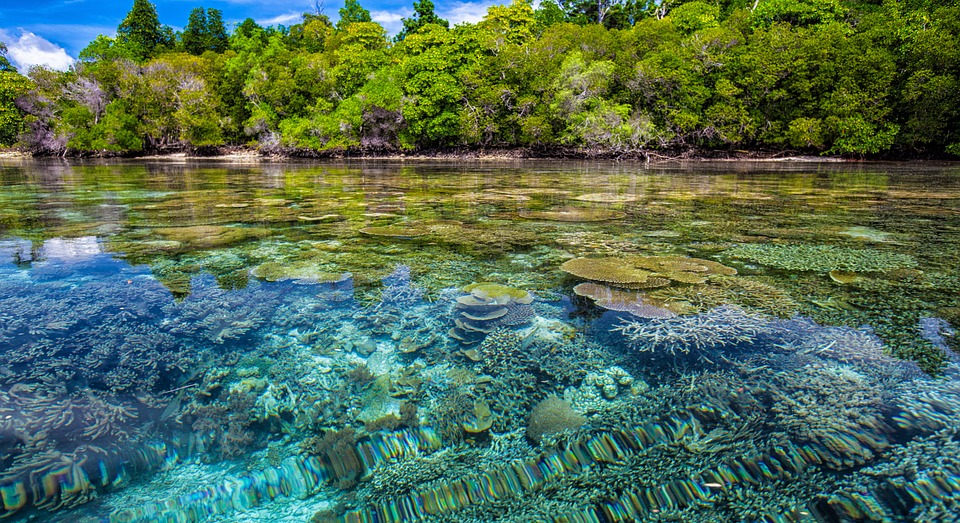Sunscreen plays a huge role in shielding its consumers from ultraviolet rays. When you apply it to the exposed parts of your skin, you protect yourself from potential skin cancer, dehydration, and rashes. When you dive in the ocean for a healthy dip, the sunscreen you have on, together with that of dozens of other beachgoers dissolves into the water and posing imminent threat to the coral reefs and the aquatic life of other marine organisms.
How Sunscreen Affects Coral Reefs
Most of the sunscreen products contain chemicals such as oxybenzone, which has a UV rays’ absorption capabilities. Unbeknown to the beachgoers, this chemical has detrimental effects on the corals in the waters. It leads to endocrine disruption, damaging the DNA in the coral and also kills them. Chemical oxybenzone leads to bleaching of corals making them reject symbiotic organisms. This leads to loss of color in the corals.
This highly toxic oxybenzone borne in sunscreen deforms the skeletal structure of infant reefs. It further leads to expulsion of algae from the reef leading to starvation and later dead coral reefs also referred to as skeletal reefs.
Every year approximately 5,000 tons of sunscreen gets into our oceans through sunbathing and swimming. An enormous amount of sunscreen and its effects will be surely felt considering the far-reaching implications of even the tiniest amount of chemical oxybenzone. A drop of this chemical into an Olympic size swimming pool is toxic enough to deform, bleach, starve and kill corals inside. This mass addition of sunscreen into the ocean hits its peak during the summer since it is about this time of the year when the sun is the hottest and swimming activities quadruple. Sunscreen sales also escalate during this period. However, the booming business leaves the corals in a sorry state, and it takes a long time to recover.
Hawaii has already issued a ban on all oxybenzone bearing sunscreen in a bid to protect the endangered coral life. Coral reefs play an essential role in the ecosystem. They provide habitats for aquatic animals as well as food. Any slight interference with the corals may lead to distortion of the whole marine ecosystem. Plankton, fish larvae and eggs are not left unharmed by the sunscreens.
The primary motive behind manufacture and sale of sunscreen is to protect humans from the dangerous UV light which is the leading cause of skin cancer. Failure to apply sunscreen after sun exposure is encouraged to find ways to restore your sun damaged skin. Beachgoers should only shun the use of oxybenzone laden sunscreens and embrace the coral reef friendly options. Dying of coral will leave us with ugly coral reefs to show for it, and all this could have been avoided. Furthermore, death, deformity, and bleaching of corals will deny us the beauty of our oceans and thousands of marine species will lack the food and conducive habitats they found in the corals.
What You Can Do
Use of coral friendly sunscreens will save the ocean ecosystem a great deal, and the affected corals will eventually recuperate and restore their previous glamour.
Featured photo credit: pixabay.com/Kanenori



